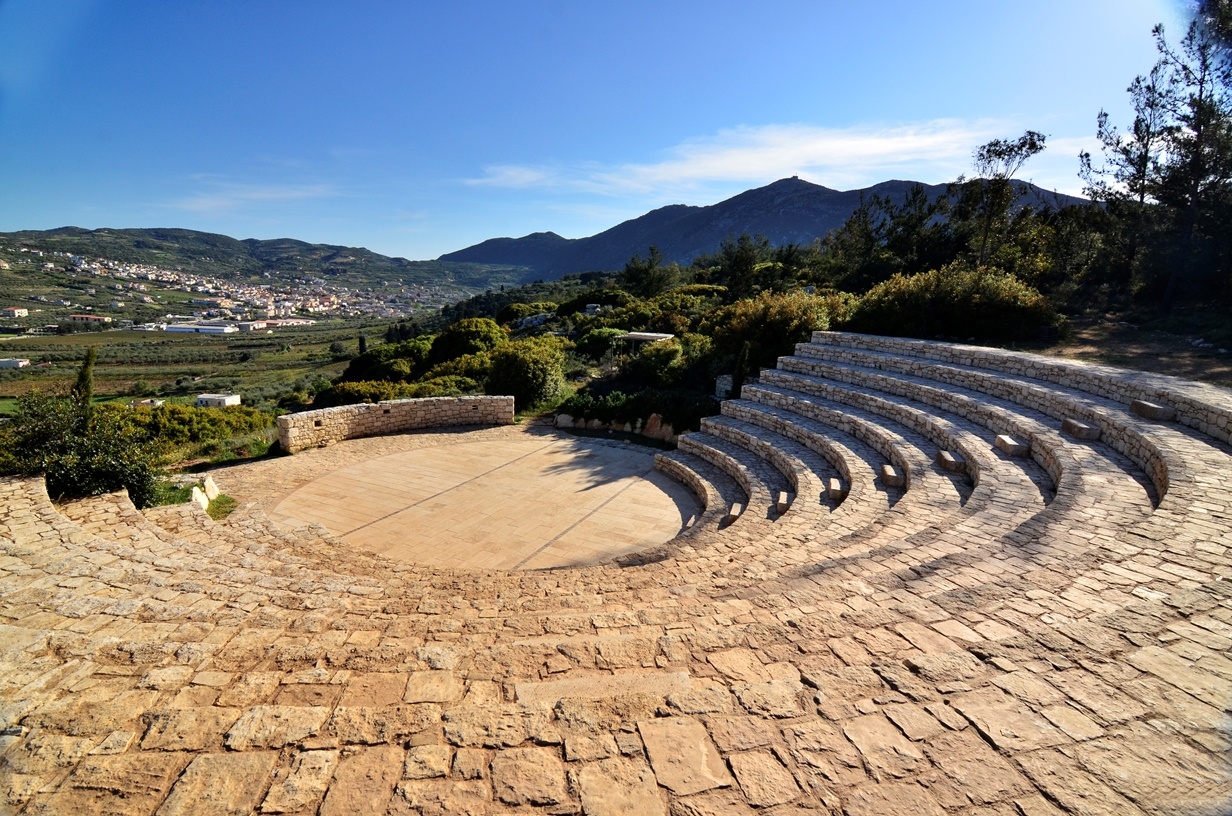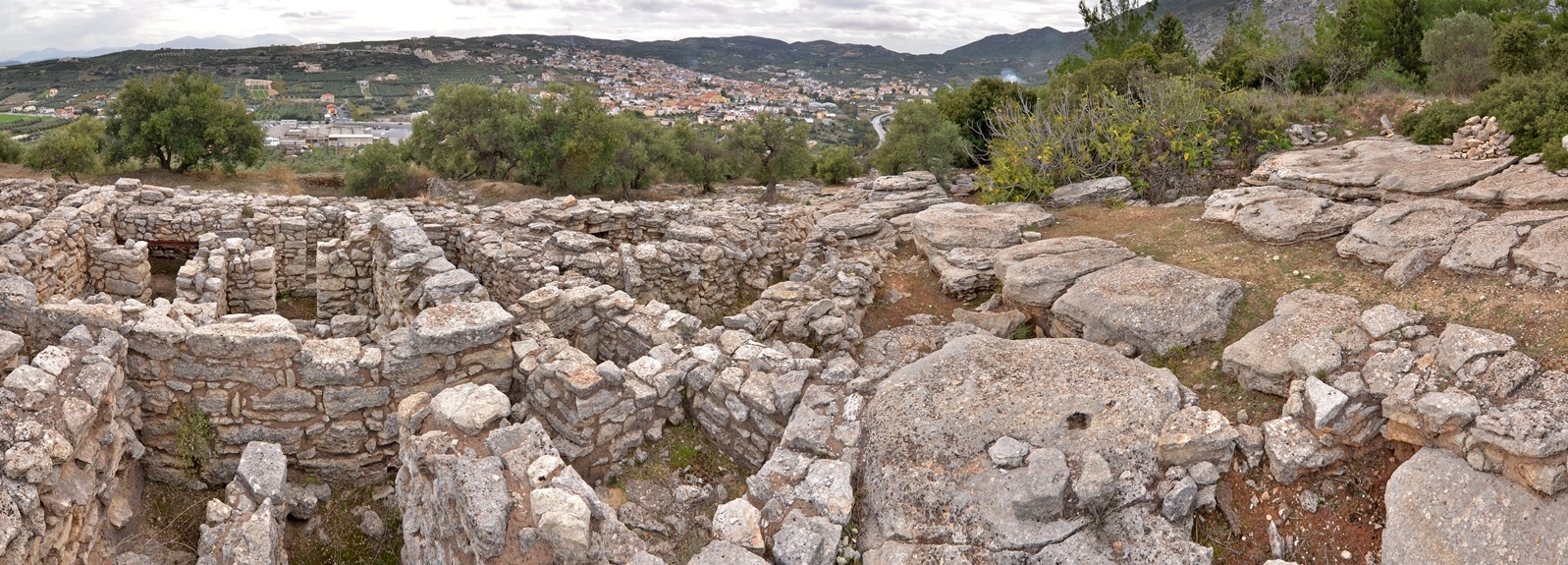
Nearest hamlet: Epano and Kato Archanes
Distance: 3.1km
Duration: 1.5 hour
Entrance / exit coordinates: 35° 15.080'N / 25° 9.767'E (Fourni Theatre)
Trail type: Goat trail without markers
Difficulty: Easy
Recommended season: Year-round
Amenities: In Kato and Epano Archanes
From Kato Archanes, approximately at the centre of the hamlet, turn onto the uphill asphalt road following the sign to ‘Fourni’ along the path to the next sign, which will lead you to the parking area of the Municipal Contemporary Theatre. This is where the trail begins. Despite it being a short trail in duration and length, it presents very interesting features. In an hour and a half hikers get a very good feeling of the geomorphology of the Mt. Juktas Ecological Park, since this circular trail starts from the small artificial forest on ‘Kefalas’ Hill and goes around the northern slope of the hill, revealing the panoramic view of the gorge of Agia Eirini below, with porous limestone rocks sculpted by time and the elements and lush vegetation.
The trail follows the gorge from the very top and approximately half way along it you can make out the hamlet of Epano Archanes. Shortly after that the trail changes course and heads north, to bring you to the ancient Minoan trail that leads to the Minoan Cemetery in Fourni, where the view is riveting. Make arrangements with the relevant archaeological service (Tel: 2810 752712- Archaeological Collection of Archanes) to gain entry to the archaeological site (especially if you are a group). From there you continue to the theatre parking area where this route ends.
Download the kml file of the route in your device: (kml) Fourni
Fourni

On Fourni Hill, between Pano and Kato Archanes, near the Minoan settlement of Archanes, within an olive grove and vineyards, a rich cemetery was discovered; this is one of the most important archaeological sites on Crete. Fourni Hill is the border of the small plain of Archanes to the north-west, but it is not part of Mt. Juktas; the western slope of the hill is steep and its peak barren.
Tombs were in use for a very long time (2400-1200 B.C.) and a wealth of artefacts have been unearthed, making it one of the most significant cemeteries in the Aegean territory. The oldest burials date back to the 3rd millennium B.C., while some tombs were used for an extremely long period (2000 B.C -1350 B.C.). Of the constructs revealed to date, most are funereal, but there some were for secular or worshipping purposes.
Fourni necropolis is characterised by a multitude and variety of burial constructs, built in a wide range of architectural styles; among them are those of eminent royal persons judging from the wealth of votive offerings. Furthermore, important evidence concerning the funereal customs and worship of Minoans has been collected. Light has been shed on the manner in which a major cemetery in the Mid and Late Minoan periods was organised and managed, with the construction of auxiliary buildings, paved roads and systems to drain rainwater. Many of the votive offerings and artefacts are imported and reflect the contact between the residents of Archanes and the Cyclades, Egypt and the East. Access to the necropolis was from the south; there is a wide path, still paved at some points, which leads from Kato Archanes to Fourni. There is a similarly constructed ascending path within the cemetery as well. It is possible that the path was constructed in Minoan times, to help the residents of Archanes carry their dead, the sarcophagi and various other objects. Until 1964 Fourni necropolis was not known. It was in that year that the first exploratory excavation by G. Sakellarakis, revealed a vaulted tomb at the east foot of the hill. The following year some more vaulted tombs were also located and since then there have been incessant excavation works exploring the area. Works to support all funereal constructs have also been carried out.


